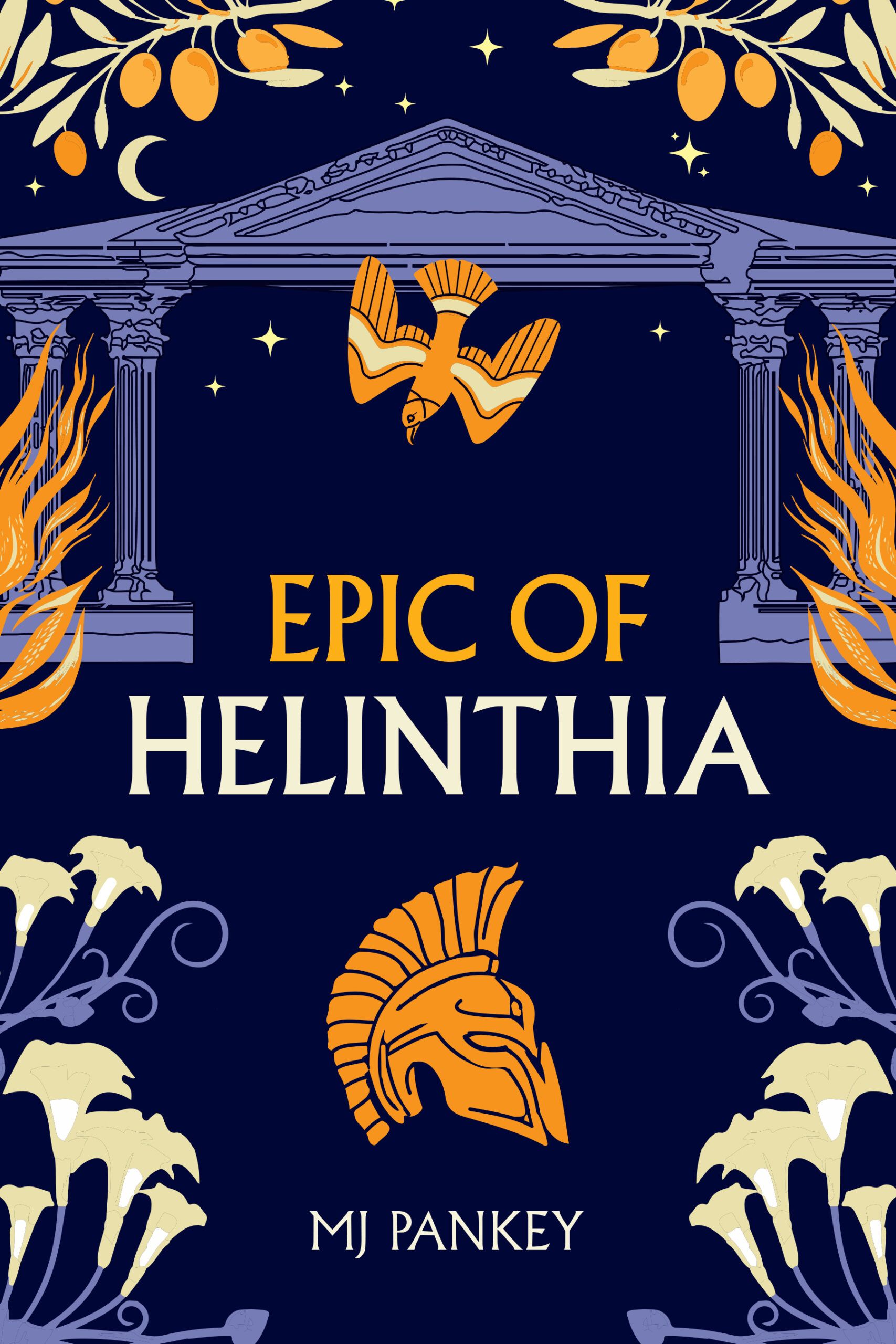The setting for MJ Pankey’s remarkable piece of historical fiction, EPIC OF HELINTHIA, is the fictional island of Helinthia in ancient Greece, where the author conjures a world brimming with life and verve, as well as mystery and betrayal. A setting of this sort entails a lot of exposition, but Pankey is a firm adherent of showing, not telling. She has a good understanding of pacing, and builds layer upon layer of intrigue with a passing comment here, a gesture there, subtly reinforcing reader’s perceptions of the main characters. And, for all the close attention paid to details of backdrop, social habits and niceties, and the physical environment, it is the interplay between her characters that really fascinates Pankey.
The difficulties of the relationships between Dargon, his sister Gonivein, and her illicit lover Kelric are simple enough to understand. Dargon, the ruler of the polis of Shallinath, has forbidden his sister Gonivein to marry before she turns twenty – supposedly to protect her, but in reality a thinly-veiled attempt to ensure Kelric loses interest in her. Kelric is the son of Raleon, the ruler of another polis. Raleon’s other son, Gadnor, begins the novel as a callow boy on the verge of becoming a man, ‘naïve, sheltered, tongue twisted, panicky’ – only as the story develops, he turns out to possess far less of these qualities than anyone gives him credit for.
All the main characters are painted in vivid colors, but Gadnor is the most complex. Picked on by his overbearing brother and ignored or poked fun at by his elders and betters, his private doubts and self-evident status as a forgotten and belittled scion make the moments of redemption that come his way all the more satisfying. His story is the one that cries out for further comment; readers may well get it, as EPIC OF HELINTHIA is envisaged as the first in a series of novels.
MJ Pankey’s EPIC OF HELINTHIA is the work of an author whose adroitness with prose, dialog, and characterization makes this an irresistible addition to the genre of the pseudo-historical novel.
~Craig Jones for IndieReader


